Before the Origin
After the Beagle voyage, Darwin spent six years in London, publishing accounts of his voyage and researches, and having his collections described. In 1842, he and his wife, Emma Wedgwood (his first cousin), moved to what Darwin called an “oldish & ugly” house in the village of Down, then sixteen miles south of London in the county of Kent. The Darwin family of four grew rapidly with the birth of eight more children. Seven of the children lived to adulthood. In this domestic setting, always fascinated by the seemingly endless diversity of life, Darwin continued his observations of nature in the quiet countryside.
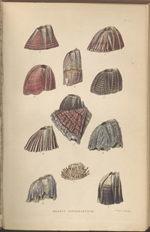 |
Charles Darwin. A Monograph on the Sub-class Cirrepedia: with Figures of All the Species. London: Ray Society, 1851-1854. First edition. [zoom] Darwin spent eight years in the 1850s studying barnacles (Cirrepedia). The work resulted in two substantial books that remain significant today. Developing an intimate knowledge of one group of organisms helped him to better understand scientific nomenclature, biological classification, and genealogical relationships. |
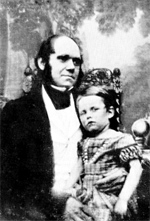 |
Charles Darwin and his son, William Erasmus (1839-1914).
Darwin’s oldest son was a toddler when his parents moved to Down House. While Darwin was a loving father, baby William was also of great interest to him as a man of science. He carefully compiled notes on his son’s gestures, expressions, and behavior. These notes were used in later publications, including “A Biographical Sketch of an Infant” (1877), published in the journal Mind. |
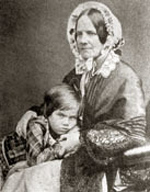 |
Emma Darwin (1808-1896) and her son, Leonard (1850-1943).
Even at young ages, Darwin’s children were attuned to their father’s constant curiosity and his immersion in his work. |
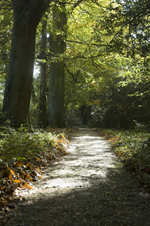 |
The sandwalk, or “thinking path,” was built on the grounds of Down House a few years after Darwin arrived. He often walked the path several times a day for exercise. [zoom] Photographed by Desmond Fitz-Gibbon. |
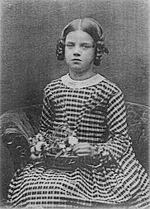 |
Anne Elizabeth Darwin (1841-1851) in 1849.
Annie was born the year before her family moved to Down House. To the profound and lasting grief of her parents, she died at age 10. |
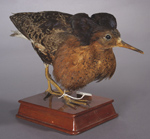 |
Ruff (Philomachus pugnax). [zoom] | Additional images: 
Growing up in the northern county of Shropshire, Darwin loved to ride and shoot. He continued these activities as a student at the University of Cambridge. He would have been familiar with the ruff whose spectacular breeding display he later described when writing about sexual selection. On loan from Cornell University Museum of Vertebrates. |